Here is a loaf without refrigeration processing. Instead its focus is on a simpler methodology. Forget about all those things they teach you in baking school such autolyse, folds, and retarding. This loaf is styled on old school mixing with no smoke-and-mirrors. It focuses on a simpler one-day mixed-to-bake bread. Following a simpler style is good practice. And you can get it done within five hours.
| TABLE LOAF (DIRECT-PROCESSING) | |||||
| THIS BREAD IS QUASI-ITALIANATE, INDEBTED TO central and northern Italy. I have found that bread in this style confuses most new-world “artisan” bakers. The loaves are not uniform or pretty or exacting. They proved seam-side-down on a bed of wheat bran, with their tops exposed. The dough is developed more during mixing than small-scale bakers might be used to. There's no folds during bulk fermentation. There's no preshaping. No autolyse. No retardation. No bells and whistles. The ingredients are mixed; fermented; cut and shaped; fermented again; and baked in a very, very hot oven. This is the style of bread I'm most attracted to, and, admittedly, it may not be for everyone. I like gnarly, wobbly loaves baked to a dark chestnut. This bread is simple. The taste is clean and fresh and wheaten, with no perceptible acid, and a thin, crisp crust. The loaves are incredibly light, in part due to the mixing regime. But this also means they will not remain as moist as long as a retarded sourdough mixed in gentler style might. Of course, this style of bread is meant to be a same-day loaf, for utility. Great sliced for lunch or dinner, perfect for toast the next morning. There is a bit of a learning curve as far as shaping is concerned, as the ideal loaf shape is a coiled tube of dough the same thickness from end-to-end. This ensures every slice of bread is approximately the same size. This style can be problematic for a production setting until those cutting and shaping the dough get used to processing bread in this manner. I find it requires a lot of “unlearning!” Thankfully, everybody at Apiece first learns to make bread in this style before all others—once mastered, it becomes a joy! All other styles of bread seem boring by comparison. I love the the fact that no two cut pieces of dough are the same shape. It requires thought and constant interaction on the baker's part to coax each slug of dough into uniform, elongated cylinders. If I had to choose just one loaf to make for the rest of my life, it'd be a variation on this one. | |||||
| PREFERMENTED FLOUR: | 16.66% | ||||
| HYDRATION OF STARTER: | 50.00% | ||||
| DOUGH YIELD: | 2 x 800g loaves | ||||
| OVERALL FORMULA | BAKER'S % | HOME | |||
| TOTAL FLOUR | 100.00% | 906.26 | g | ||
| Flour, Wheat, Roller-Milled (11.5% protein) | 80.00% | 725.01 | g | ||
| Flour, Whole Wheat, Stone-Ground (T-160) | 10.00% | 90.63 | g | ||
| Flour, Wheat, Stone-Ground (T-85) | 10.00% | 90.63 | g | ||
| Water | 74.00% | 670.63 | g | ||
| Sea Salt | 1.80% | 16.31 | g | ||
| Flour, Malted Barley, Freshly-Milled | 0.75% | 6.80 | g | ||
| TOTAL YIELD | 176.55% | 1,600.00 | g | ||
| DOUGH STARTER BUILD | |||||
| Flour, Wheat, Roller-Milled (11.5% protein) | 100.00% | 150.98 | g | ||
| Water | 50.00% | 75.49 | g | ||
| Stiff Starter, Previously-Fermented | 10.00% | 15.10 | g | ||
| TOTAL | 170.00% | 241.57 | g | ||
| FINAL DOUGH | |||||
| TOTAL FLOUR | 100.00% | 755.28 | g | ||
| Flour, Wheat, Roller-Milled (11.5% protein) | 76.00% | 574.02 | g | ||
| Flour, Whole Wheat, Stone-Ground (T-160) | 12.00% | 90.63 | g | ||
| Flour, Wheat, Stone-Ground (T-85) | 12.00% | 90.63 | g | ||
| Starter, From Above | 29.99% | 226.47 | g | ||
| Water | 78.80% | 595.14 | g | ||
| Sea Salt | 2.16% | 16.31 | g | ||
| Flour, Malted Barley, Freshly-Milled | 0.90% | 6.80 | g | ||
| TOTAL | 211.84% | 1,600.00 | g | ||
| 1. DOUGH STARTER BUILD. | |||||
| Mix the dough starter 12 to 16 hours before the final dough, and leave to ferment in an air-tight, food-grade container. Desired dough temperature is 30°C. | |||||
| 2. MIXING. | |||||
| For the home baker: Add all ingredients to a large mixing bowl and combine by squeezing them into each other with both hands. Proceed until every particle of flour is hydrated and a shaggy dough is achieved. Using a plastic scraper, remove the dough from the bowl and slap-and-fold on a hard benchtop for 10 to 12 minutes. Stop several times throughout this process to “scissor” through developing any protein strands. (To do so, form the first fingers and thumbs of each hand into an O and pinch the dough from back to front into a chain of smaller balls before continuing to slap-and-fold.) This dough in particular benefits from more development and air-incorporation upfront since it receives no folds during bulk fermentation. For the professional baker: Combine all ingredients in the bowl of a spiral mixer. Mix for 8 minutes on 1st speed and 8 minutes on 2nd speed. Desired dough temperature is 26°C in summer and 28°C in winter. | |||||
| 3. BULK FERMENTATION. | |||||
| About 3h. | |||||
| 4. DIVIDING AND SHAPING. | |||||
| Divide the dough into two equal portions of 800g apiece and shape either into a round or a rustic tube. Place seam-side-down atop a towel, cloth or couche generously coated with wheat bran, folding the edges over the loaf to help support it. | |||||
| 5. FINAL FERMENTATION. | |||||
| 2h to 3h, temperature depending. | |||||
| 6. BAKING. | |||||
| With ample steam, bake at 265° to 285°C for 20 minutes, before lowering the temperture to 220°C for additional 25 to 35 minutes or until done. | |||||

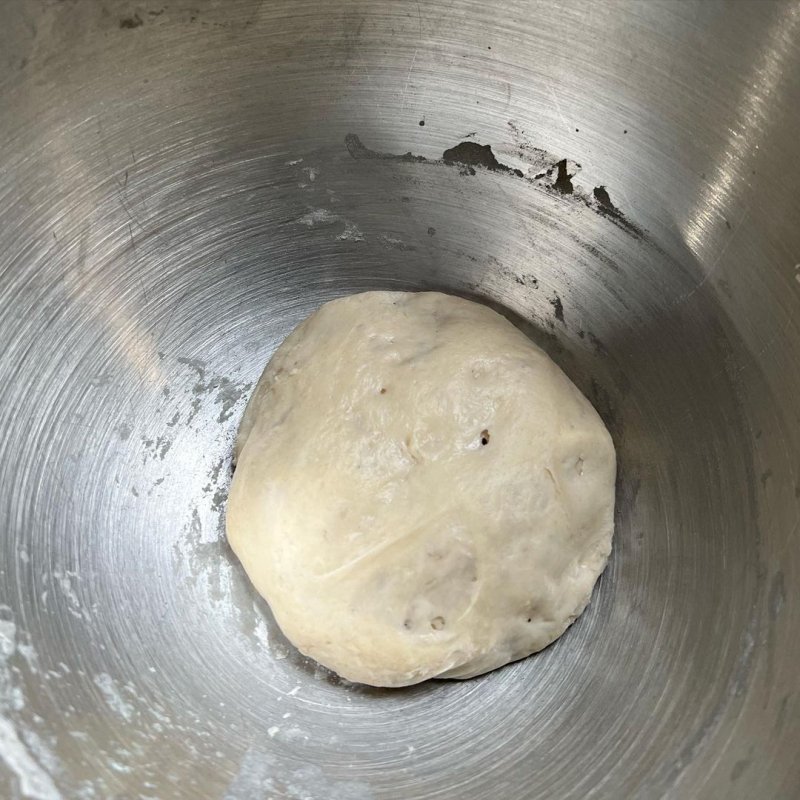
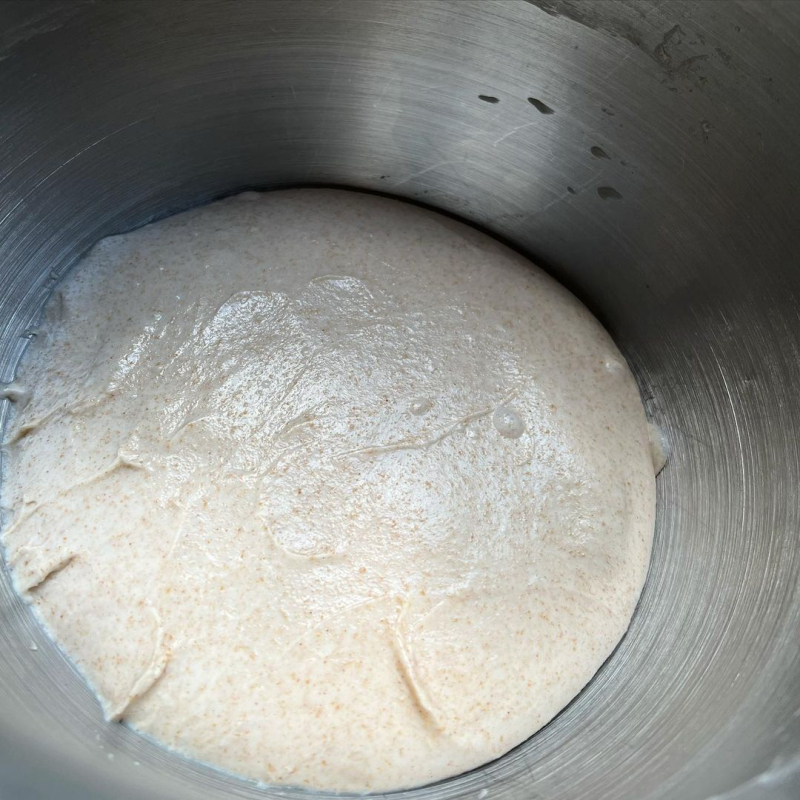
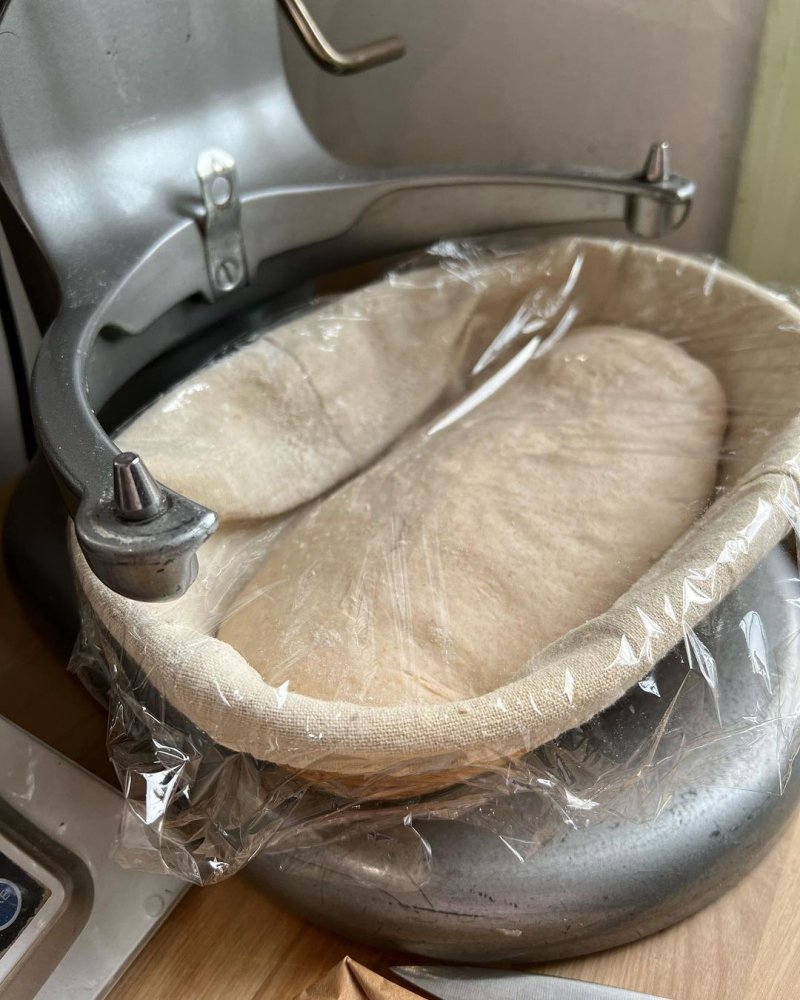
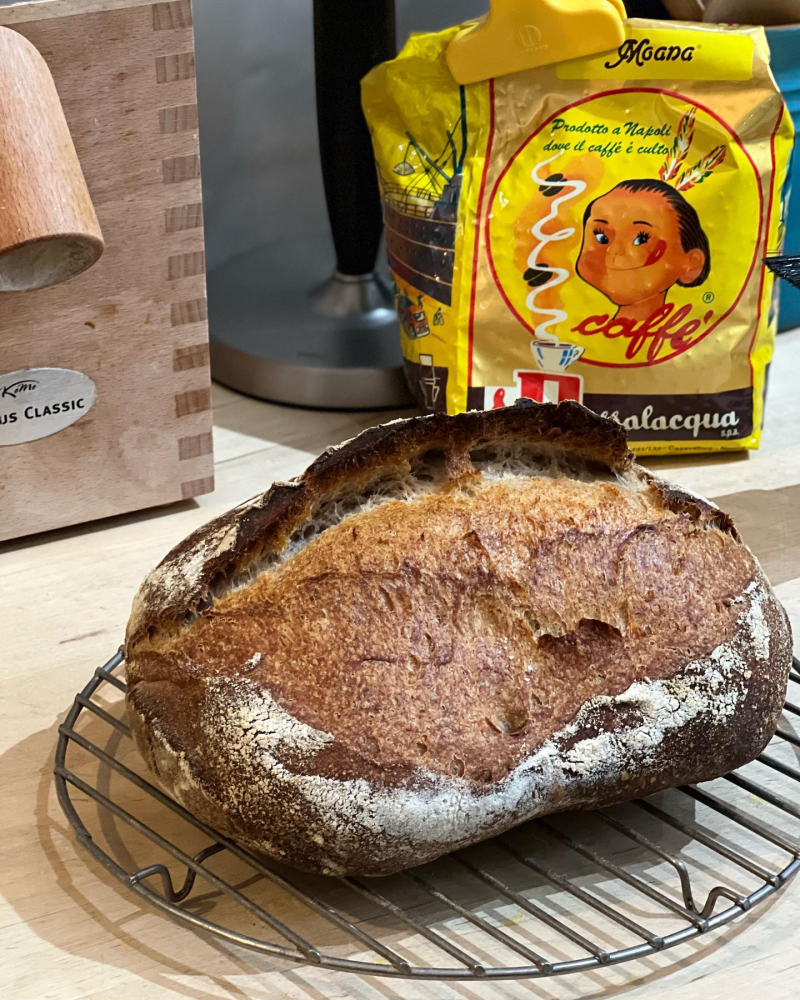
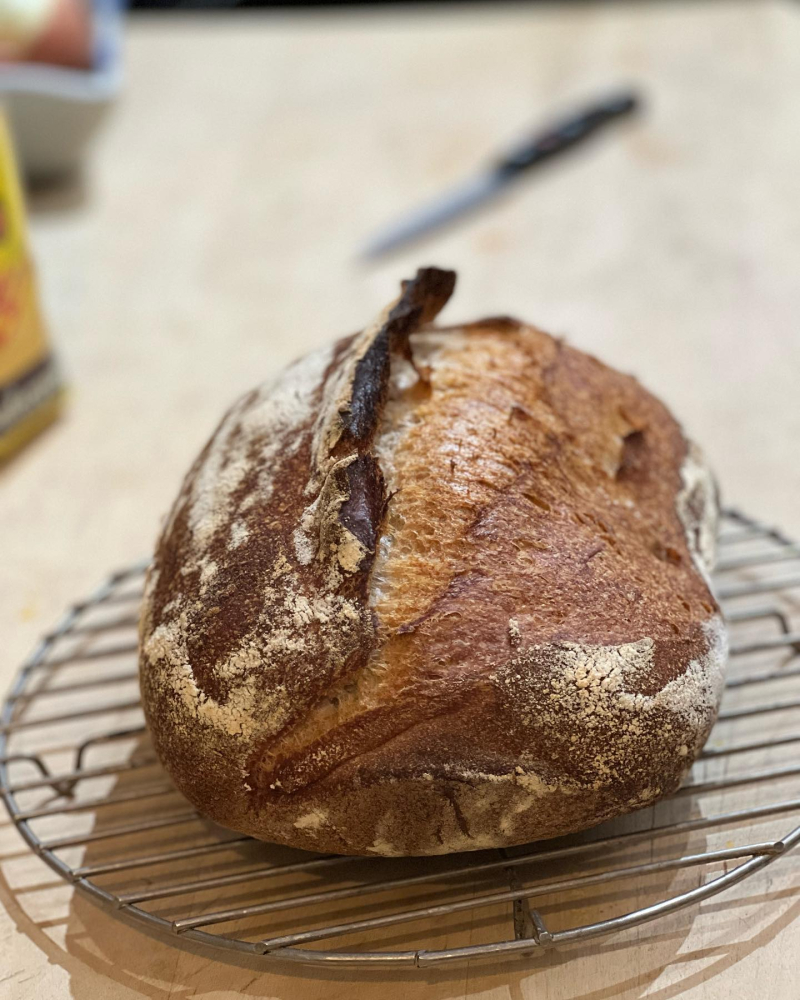
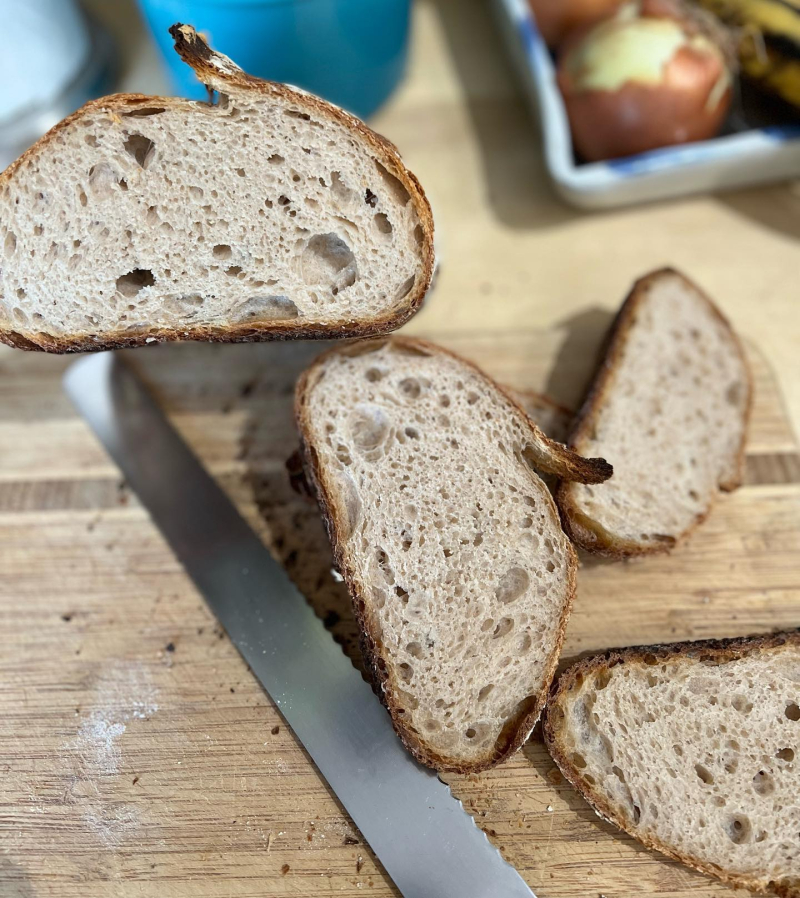
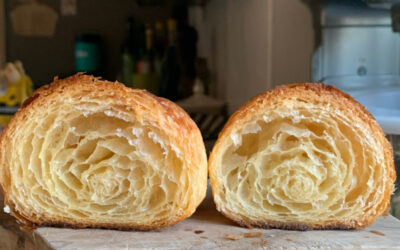

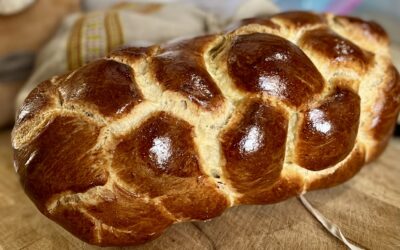
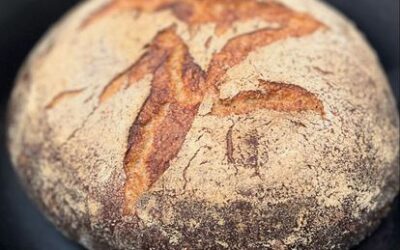
0 Comments